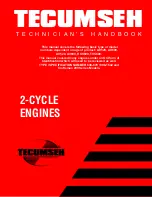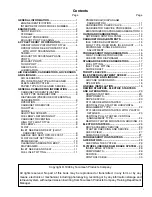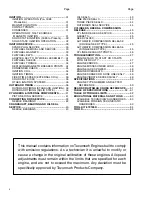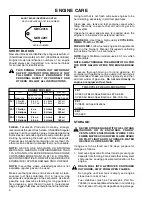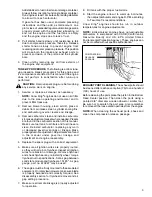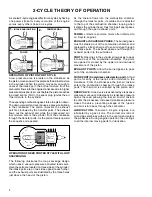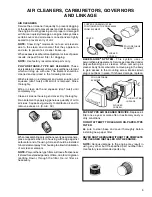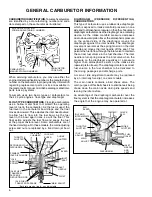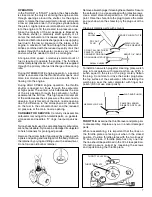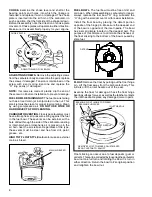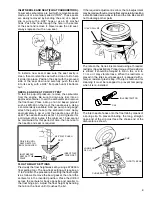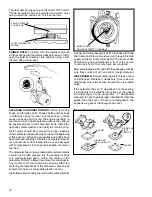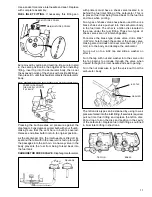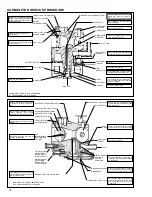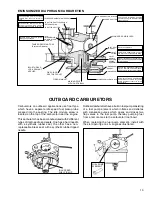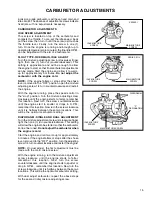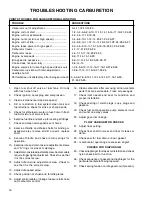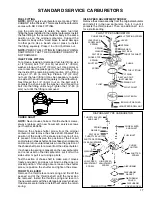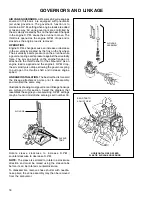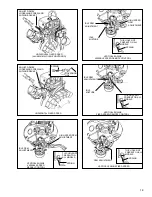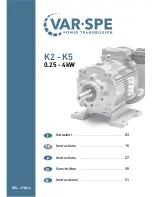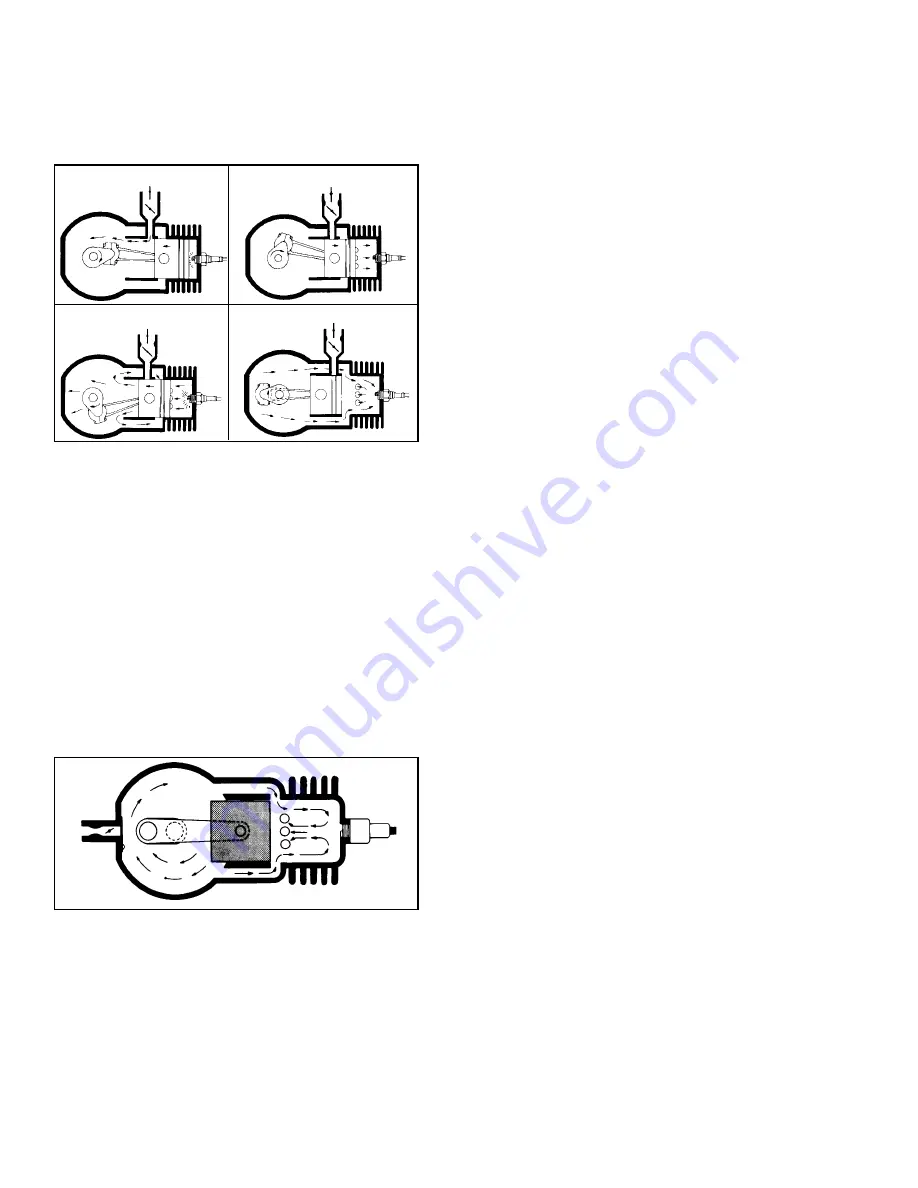
4
2-CYCLE THEORY OF OPERATION
As the mixture flows into the combustion chamber
through the transfer ports, it collides and is directed
to the top of the combustion chamber looping when
it strikes the cylinder head, thus forcing all spent gases
out through the open exhaust ports.
TERMS.
Listed are common terms often referred to
on 2-cycle engines.
EXHAUST or SCAVENGE PHASE.
The burned gases
must be cleared out of the combustion chamber and
replaced by a fresh charge of fuel-air mixture through
the intake ports. The exhaust passes out through the
exhaust ports into the outside air.
PORTS
. Openings in the cylinder allow gases to pass
into and out of the combustion chamber. The ports
are opened or closed by the upward and downward
movement of the piston.
EXHAUST PORTS.
Allow the burned gases to pass
out of the combustion chamber.
THIRD PORT (Sometimes called piston port).
A third
port is for entry of the fuel-air and oil mixture to the
crankcase. From the crankcase the fuel-air mixture
enters the combustion chamber through the intake
ports. The third port is controlled by the piston skirt.
REED VALVE.
A reed valve is activated by crankcase
pressure or vacuum. A decrease in crankcase pressure
opens the reed allowing the fuel air and oil mixture
to enter the crankcase. Increased crankcase pressure
closes the valve, preventing escape of the fuel-air
and oil mixture back through the carburetor.
LUBRICATION.
Tecumseh 2-cycle engines are
lubricated by a gas oil mix. The correct mix ratio of
oil and gas combines with air in the venturi and enters
the crankcase. During engine operation the oil clings
to all the internal moving parts for lubrication.
3.
1.
4.
INTAKE AND IGNITION
POWER
2.
COMPRESSION
OPERATION OF REED PORTED STYLE WITH LOOP
SCAVENGING
The following illustrates the loop scavenge design
which uses a vacuum-pressure activated reed valve.
Here the ports are located on three sides of the cylinder;
the intake ports are on two sides opposite each other,
and the exhaust ports are illustrated by the three holes
just above the head of the piston.
OPERATION OF PISTON PORT STYLE.
A low pressure area is created in the crankcase as
the piston moves upward to compress the air/fuel mixture
in the cylinder. When the piston moves far enough to
uncover the intake port, the air/fuel mixture from the
carburetor flows into the engine crankcase due to higher
pressure atmospheric air. Just before the piston reaches
top dead center (TDC), the spark plug ignites the air
/ fuel mixture in the cylinder.
The expanding combustion gases force the piston down.
The downward piston travel causes a pressure buildup
in the crankcase. The piston uncovers the exhaust
port first, followed by the transfer ports. The exhaust
flows out the exhaust port while the pressurized air/
fuel mixture enters the cylinder from the crankcase
through the transfer ports. As the piston travels upward
the sequence is repeated.
Air cooled 2-cycle engines differ from 4-cycles by having
one power stroke for every revolution of the engine
versus every other stroke on 4-cycles.
Summary of Contents for AH520 -
Page 67: ...64...

